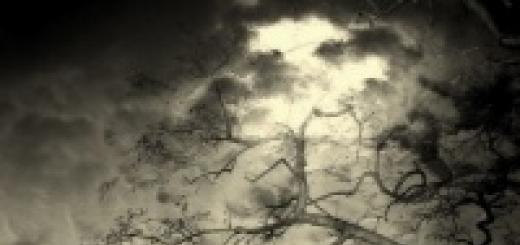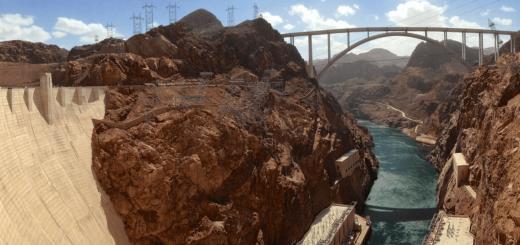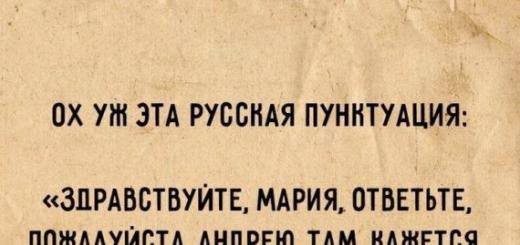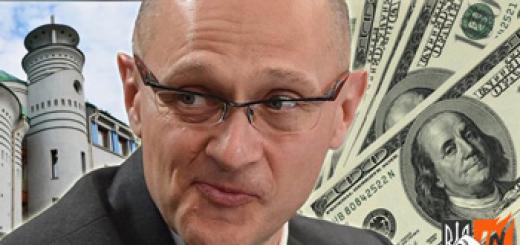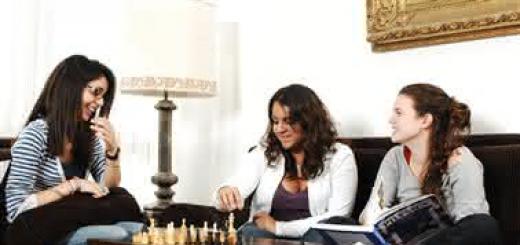East Slavs history test for 6th grade students. The test includes 2 options, each option consists of 2 parts (part A and part B). Part A has 5 questions and Part B has 3 questions.
Each correct answer is 1 point.
7-8 points - excellent
5-6 points - good
3-4 points - satisfactory
less than 3 points - unsatisfactory
1 option
A1. What tribes invaded the Northern Black Sea region in the 4th c. led to the destruction of the Greek and Scythian states in this region?
1) Huns
2) avar
3) Khazar
4) Bulgar
A2. Which of the listed agricultural cultures was familiar to the Eastern Slavs in antiquity?
1) tomato
2) millet
3) corn
4) potatoes
A3. The skins of what fur-bearing animal did the Eastern Slavs mainly use as money, for exchange?
1) beaver
2) mink
3) foxes
4) martens
A4. Which of the following was characteristic of the social life and economic activity of the Eastern Slavs in the 7th-8th centuries?
1) big role of joint driven hunting
2) massive use of slave labor on earth
3) the predominant role of craft and trade
4) joint ownership of hayfields and forest lands
A5. The most culturally, politically and economically developed state with which the Eastern Slavs contacted in the 8th-9th centuries was
1) Sweden
2) Byzantium
3) Poland
4) Hungary
B1.
The system of agriculture, in which depleted lands in the steppe and forest-steppe regions were not plowed up for 20-30 years, until they restored fertility, and the farmers moved to other plots of land.
B2. The following are terms related to the management system and social structure of the Eastern Slavs in the 7th-8th centuries. Find and write down the serial number under which the term is indicated that is not related to the management system and public life of the Eastern Slavs in the 7th-8th centuries.
1) veche;
2) rope;
3) elder;
4) tribe;
5) policy.
B3. What pagan deities belonged to the pantheon of East Slavic tribes? Find two names in the list below and write down the numbers under which they are indicated.
1) Mokosh
2) Demeter
3) Thor
4) Veles
5) Ares
Option 2
A1. What was the name of the capital of the Khazar Khaganate?
1) Itil
2) Olvia
3) Panticapaeum
4) Bulgar
A2. What was the name of the neighboring community among the Eastern Slavs?
1) brand
2) posad
3) rope
4) polyudie
A3. What type of management was the main one for the Eastern Slavs in the 7th-8th centuries?
1) craft
2) cattle breeding
3) farming
4) hunting
A4. Which of the following was characteristic of the beliefs and religious cult of the Eastern Slavs in the 7th-8th centuries?
1) the construction of large stone temples-sanctuaries to the gods
2) belief in one god
3) mass sacrifices on religious holidays
4) worship of wooden images of gods - idols
A5. Bortnichestvo is a type of economic activity associated with
1) hunting for a fur-bearing animal
2) fishing
3) collecting honey
4) cattle breeding
B1. Write down the word (term) you are talking about.
The people's assembly among the Eastern Slavs, at which elders were elected to conduct common affairs and the most important issues were resolved.
B2. The names of East Slavic deities, spirits, evil spirits, etc. are listed below. Find and write down the serial number under which the name is indicated, which is not related to the beliefs of the Eastern Slavs.
1) mermaid;
2) goblin;
3) water;
4) genie;
5) brownie.
B3. Which of the following names refer to the East Slavic tribes? Find two names in the list below and write down the numbers under which they are indicated.
1) Sarmatians
2) Dregovichi
3) cheremis
4) Polotsk
5) Bulgars
Answers to the test on the history of the Eastern Slavs
1 option
A1-1
A2-2
A3-4
A4-5
A5-2
B1-folding
B2-5
B3-14
Option 2
A1-1
A2-3
A3-3
A4-4
A5-3
B1-veche
B2-4
B3-24
1. The emergence of a producing economy occurs:
a) during the Neolithic period;
b) in the Paleolithic era;
c) in the Mesolithic era;
d) in the era of the Eneolithic;
e) there is no correct answer.
2. Eastern Slavs belong to the language family:
a) Finno-Ugric;
b) Iberian-Caucasian;
c) Indo-European;
d) Baltic;
e) there is no correct answer.
3. East Slavic tribes appeared by the VI century. AD:
a) agricultural;
b) livestock;
c) wild (did not have a producing economy);
d) nomadic pastoralists;
e) there is no correct answer.
4. The territory of settlement of the East Slavic tribal unions in the VI - IX centuries extended to:
a) the West Siberian Plain;
b) the East European Plain;
c) the northern coast of the Black Sea;
d) the Carpathian region;
e) there is no correct answer.
5. The formation of the state among the Eastern Slavs occurs as a result of:
a) the decomposition of the tribal system and the emergence of classes;
b) calling Varangian princes;
c) agreements between the princes of the East Slavic tribal unions;
d) the expansion of Byzantium;
d) there is no correct answer
6. The formation of the Old Russian state takes place in:
a) VI century AD;
b) 9th century AD;
c) IX century BC;
d) X century AD;
e) there is no correct answer.
7. The unification of the Eastern Slavs takes place around:
a) a tribal union of glades;
b) the tribal union of the Drevlyans;
c) the tribal union of Polotsk;
d) the tribal union of the Krivichi;
e) there is no correct answer.
8. Ilmen Slovenes lived around the cities:
a) Ladoga and Pskov;
b) Novgorod and Ladoga;
c) Izborsk and Novgorod.
d) Novgorod and Pskov;
e) there is no correct answer.
9. The central part of the ancient Russian city was called:
a) the Kremlin;
b) kid;
c) freedom;
e) there is no correct answer.
10. The religion of the Eastern Slavs in the VI - IX centuries. It was:
a) Christianity
b) Catholicism;
c) paganism;
d) Judaism;
e) there is no correct answer.
11. The Old Russian state was:
a) military democracy;
b) absolute monarchy;
c) early feudal monarchy;
d) boyar republic;
e) there is no correct answer.
12. The date of formation of the state of Kievan Rus is considered:
b) 882;
d) 1054;
e) there is no correct answer.
13. The name of the dynasty of Kievan princes was given by:
a) Rurik;
d) Svyatoslav;
e) there is no correct answer.
14. The Norman theory of the origin of the Old Russian state appeared in:
a) 15th century
b) XVIII century;
d) the 16th century;
a) Lomonosov M.V.;
b) German scientists Miller and Bayer;
c) chronicler Nestor;
d) historian Solovyov;
e) there is no correct answer.
16. In the first half of the 10th century, the people of Kiev paid tribute:
a) Pechenegs;
b) Polovtsy;
c) the Khazars;
d) Avaram;
e) there is no correct answer.
a) the interfluve of the Oka and Volga;
b) Middle Dnieper;
c) Lake Ilmen;
d) northern Carpathian region;
e) there is no correct answer.
18. Eastern Slavs include:
a) Bulgarians;
c) catch;
d) Pechenegs;
e) there is no correct answer.
19. The god was the patron of cattle breeding among the Slavs - pagans:
a) Veles;
b) Svarog;
c) Stribog;
e) there is no correct answer.
20. The first of the Kyiv princes took the title of grand duke (prince of all princes):
b) Svyatoslav;
c) Oleg;
d) Vladimir;
e) there is no correct answer.
Part 2
1. The main occupation of the Eastern Slavs was .... (agriculture)
2. The capital of the Old Russian state was the city .... (Kyiv)
3. The most important trade routes of Ancient Rus' were .... (the path "From the Varangians to the Greeks" and "Volga trade route")
4. The main agricultural systems of the Eastern Slavs were .... (slash-and-burn and fallow)
5. The collection of tribute in Ancient Rus' was called .... (polyudye)
6. Alexander the Great of Eastern Europe is called ... (Prince Svyatoslav)
7. Name the difference between a neighboring community and a clan community. (association not on the basis of consanguinity, but on the basis of common territory of residence)
8. The first of the known forms of economic dependence of the population on the authorities was called ... (polyudye)
9. The first "tax reform" was carried out in the reign of ... (Olga) and consisted of... (ordering the collection of tribute: established "lessons" - the amount of tribute and "graveyards" - places of tribute collection)
Test on the topic "Russian centralized state in the XIV-XVII centuries"
1. Name two centers of the unification of Russian lands in the XIII-XIV centuries.
A) Moscow and Tver
B) Moscow and Kyiv
C) Tver and Vladimir
D) Moscow and Vladimir
2. The Battle of Kulikovo took place:
3. The victory on the Kulikovo field was won by:
A) Dmitry Donskoy
B) Alexander Nevsky
B) Ivan Kalita
D) Ivan III
4. The unification of Russian lands into a single centralized state was completed by:
A) Dmitry Donskoy
B) Alexander Nevsky
B) Ivan Kalita
D) Ivan III
5. To the governing bodies at the end of the 15th - the first half of the 16th century. not applicable:
A) boyar duma
B) Senate
B) royal court
6. What was the name of the post of abbot of a monastery in medieval Rus'?
A) metropolitan
B) Bishop
B) hegumen
D) Deacon
7. In what year was the Sudebnik of Ivan III adopted?
D) 1497
8. With what event is the end of the Horde yoke in Rus' connected?
A) "Standing on the Ugra"
B) "The Great Jam"
C) "Union of Utrecht"
D) "Uglich case"
9. Who created the idea of "Moscow - the third Rome"?
A) Metropolitan Jonah
B) Elder Bartholomew
C) monk Philotheus
D) Joseph Volotsky
10. Name the years of the reign of Ivan the Terrible:
A) 1547-1584
11. What is oprichnina?
A) a special procedure for governing the country under Ivan IV
B) special forces
B) land holding system
D) governing body
12. Early 17th century entered the history of Russia as:
A) time for reform
B) the era of liberation
B) great conquests
D) troubled times
13. The following event does not belong to the era of troubled times in Russia:
A) The campaign of False Dmitry I to Moscow
B) Polish-Swedish intervention
B) Adoption of the Law Code
D) Creation of the people's militia by Minin and Pozharsky
14. The first tsars from the Romanov dynasty (eliminate the excess):
A) Vasily Shuisky
B) Alexei Mikhailovich
B) Mikhail Fedorovich
D) Fedor Alekseevich
15. An important event in the middle of the 17th century. :
A) church schism
B) Zemstvo reform
C) The election of the first tsar from the Romanov dynasty
TEST "EASTERN SLAVES"
1. East Slavic peoples include
1) Poles 2) Serbs 3) Czechs 4) Russians
2. The Slavs are
1) Chud 2) Zyryans 3) Volynians 4) Adygs
3. Non-Slavic tribe
I) Muroma 2) Polyane 3) Volynians 4) Tivertsy
4. The tribal union of Novgorod Slovenes has developed
1) in the middle reaches of the Dnieper 2) on the banks of the Ilmen Island and the Volkhov River 3) on the banks of the Oka River 4) in the upper reaches of the Volga River
5. The main branch of the economy of the Eastern Slavs in the VI-VII centuries.
1) beekeeping 2) nomadic pastoralism 3) intermediary trade 4) slash-and-burn agriculture
6. The main deity of the pagan pantheon of the Eastern Slavs was not
1) Dazhdbog 2) Viy 3) Perun 4) Veles
7. The main city of the glades was
1) Novgorod 2) Chernigov 3) Kyiv 4) Smolensk
8. The rudiments of statehood appeared earlier than others in
1) Drevlyans 2) Krivichi 3) Vyatichi 4) Glades and Novgorod Slovenes
9. The military leader of the East Slavic tribes was called
1) elder 2) headman 3) prince 4) warrior
10. One of the initial centers of the formation of the ancient Russian state was
1) Smolensk 2) Polotsk 3) Novgorod 4) Rostov
11. The theory according to which statehood was brought to Rus' by the Varangians is called
1) Slavophile 2) Norman 3) Western 4) anti-Norman
12. The unification of the two centers of ancient Russian statehood took place in
1) 860 2) 862 3) 882 4) 911
13. In 862 he began to rule in Novgorod
I) Igor 2) Rurik 3) Oleg 4) Askold
14. Read the text and answer the questions
Customs and religion of the Slavs
All these tribes had their own customs, and the laws of their fathers, and traditions, and each had its own temper. Glades have the custom of their fathers meek and quiet, bashful in front of their daughters-in-law and sisters, mothers and parents; before mothers-in-law and brothers-in-law they have great modesty; they also have a marriage custom: the son-in-law does not go for the bride, but brings her the day before, and the next day they bring for her - what they give. And the Drevlyans lived as an animal custom, lived like a beast: they killed each other, ate everything that was not clean, and they did not have marriages, but they kidnapped the girls from
water. And the Radimichi, Vyatichi and Northerners had a common custom: they lived in the forest, like all animals, ate everything that was not clean and shamed them with their fathers and daughters-in-law, and they never had marriages, but games were arranged between villages, and converged on these games, on dances and all sorts of demonic songs, and here they kidnapped their wives in collusion with them; and they had two and three wives. And if someone died, they arranged a funeral feast for him, and then they made a large deck, and laid a dead man on this deck, and burned it, and after collecting the bones, they put them in a small vessel and put them on poles along the roads, as they still do now Vyatichi . The same custom was followed by the Krivichi and other pagans, who did not know the law of God, but established laws for themselves.
The Tale of Bygone Years.
Questions:
1. Were the laws and customs of the East Slavic tribal unions the same? Why do you think?
2. When describing the customs and mores of the meadows, the author of the PVL cites clearly Christian traditions. How can you explain it?
3. What is common and what are the differences in the customs of the other listed Slavic tribal unions?
4. What features of the funeral rite of the Eastern Slavs (in particular, the Vyatichi) are recorded by the author of the PVL, and which ones are omitted? Why do you think?
Ў:15sveta(C:\Documents and Settings\sveta.15229172177B413\My Documents\history\history of ancient Rus'\tests\TEST Eastern Slavs.doc
·
TEST on the history of Russia. 6th grade.
TOPIC "Eastern Slavs".
1. Identify and write down the excess in each row of concepts, explain why you decided so.
A) glade, drevlyans, muroma, dregovichi, northerners;
B) sickle, harrow, plow, plow, spear, flail;
C) agriculture, beekeeping, military affairs, craft, fishing, hunting;
D) Chud, measuring, all, Mordovians, Cheremis, Vyatichi;
D) Yarilo, Khors, Volos, Poseidon, Perun;
E) Vladimir, Svyatoslav, Vyacheslav, Ivan, Dobrynya;
G) Izyaslav, Yaroslav, Pervak, Ilya.
2. Find a match between words and their meaning:
| Beliefs in many gods |
|||
| Pagan priests |
|||
| beekeeping | |||
| Collection of honey from wild bees |
|||
| Image of a pagan god |
|||
| Paganism | Tool for threshing dry ears |
||
| National Assembly in Rus' |
|||
| Request to God |
|||
3. By what principle are the rows formed:
A) goblin, brownie, water;
B) Mokosh, Perun, Stribog, Volos (Veles), Lel, Lada;
C) wheat, millet, barley, buckwheat;
D) measuring, Chud, Muroma, Cheremis;
D) glade, drevlyans, krivichi, drevlyans;
E) beekeeping, hunting, fishing;
WORDS FOR INFORMATION: a) crafts, b) neighbors of the Eastern Slavs, c) tribes of the Eastern Slavs, d) spirits in which the Slavs believed; e) the gods of the Slavs; f) field crops sown by the Slavs;
4. What occupations of the Slavs are mentioned in the passage?
“It's a big country and there are a lot of trees growing close together. And they live between these trees. And they have no other crops than millet, and no grapes, but a lot of honey, from which they make wine and similar drinks ... They have herds of pigs, just like we have herds of rams. And the food of their king is milk ... Their clothes are mostly made of linen. (Hadudal-Alam "Limits of the World")
5. After reading the archaeologist's report, make at least 4 conclusions about the lifestyle and occupations of the Slavs.
“At the bottom of the pit is a small amount of severely burnt bones of the deceased. In rare cases, there is a poor inventory: a whorl. Pendant, clasp, ceramic fragments. Marsh iron tools and crafts: knives, sickles, chisels. Among the tools made of stone, millstones are often found. For the manufacture of nets, a needle was used - a kochedyk made from the ribs of a ram. There are also things from the Roman provinces, first of all, beads of blue, green or white glass ... "
6. INSERT THE WORDS into the text. Words can be changed, but used 1 time. Keep in mind that there are more words than gaps.
“In _______ (1) centuries, the vast expanses of _______ (2) plains were inhabited by ___________ (3) tribes. Their main occupation was _______(4). The Slavs were good ________ (5), distinguished by love for _______ (6), all issues were resolved together, gathering on ______ (7).
WORDS FOR REFERENCES: a) veche; b) agriculture; c) East European; d) East Slavic; e) Baltic; e) freedom; g) warriors; h) military affairs; j) blacksmiths. k) V - VII; m) IV-V.
7. Give short answers to the questions.
7.1. Why did the Slavs build their dwellings in hard-to-reach places and make many exits in them?
7.2. What was the organization of government in the Slavic tribes?
7.3. Describe two systems of agriculture among the Slavs.
History has preserved several names of the ancestors of the East Slavic tribes, including
Varangians, Vikings, Normans - these are all names
In which of the chronicles in the first lines the question is posed: “Where did the Russian Land come from, who in Kyiv began to reign first and where did the Russian land come from?”
What modern peoples were based on the ancient Russian nationality?
A5. In the pre-state period, the Eastern Slavs developed two centers in
1) Novgorod and Dnieper
2) Volga and Baltic
3) Baltic and Black Sea
4) The Volga region and the Don
A6. Neighbors of the Eastern Slavs
1) Germans
2) galls
3) Romans
4) Khazars
A7 . The transition from a tribal community to a neighboring one among the Eastern Slavs occurred as a result of
1) formation of unions of tribes
2) development of arable farming
3) the emergence of feudal estates
4) the need to defend against nomads
A8 . The occupation of breeding bees and obtaining honey among the Slavs was called
1) beekeeping
2) architecture
3) cooperage
4) pottery
A9. The main trading partner of the Old Russian state was
1) Byzantium
2) Sweden
3) Tmutarakan
4) Scythia
B1 Arrange in the correct sequence from north to south the rivers and lakes that were part of the trade route "from the Varangians to the Greeks."
A) Lake Ladoga
B) Dnieper
B) catch
D) Ilmen
B2. Establish a correspondence between the name of the tribal union of the Slavs and the place of their settlement. Enter your answer in the table:
TRIBE | PLACE OF SETTLEMENT | ||
northerners | Upper reaches of the Western Dvina, Dnieper and Volga |
||
Vyatichi | Lands between Pripyat and Western Dvina |
||
Dregovichi | Lands along the Oka, Klyazma, Sister, Moscow, Upper Volga |
||
krivichi | Lands along Sula, Semi, Desna |
||
Lands along the Western Bug and in the spurs of the Carpathians |
Part C
1. (С4)
Name at least three provisions characterizing the occupations of the Eastern Slavs, and give at least three names of the tools that they used.
2. (С4)
Name at least three provisions that characterize the beliefs of the Eastern Slavs, and give at least three names of the deities they worshipped.
3. (С4)
Name at least three provisions that characterize the social structure of the Eastern Slavs in the 6th-8th centuries, and indicate at least three main prerequisites for the formation of the state among the Eastern Slavs.
No. 5. (С5)
Below are two points of view on the origin of the Old Russian state:
- The Old Russian state arose as a result of the folding of internal prerequisites: the development of society, social and economic changes.
- Statehood was brought to Rus' from outside, by the Normans. Which of the above points of view do you prefer?
more preferable and persuasive. Give at least three facts, provisions that can serve as arguments confirming your chosen point of view.
No. 6. (С5)
Below are two points of view on the formation of the state among the Slavs:
- The Varangians brought statehood to the Slavic lands.
- The Varangians had little influence on the formation of the state among the Slavs.
Indicate which of the above points of view seems to you more preferable and convincing. Give at least three facts, provisions that can serve as arguments confirming your chosen point of view.




